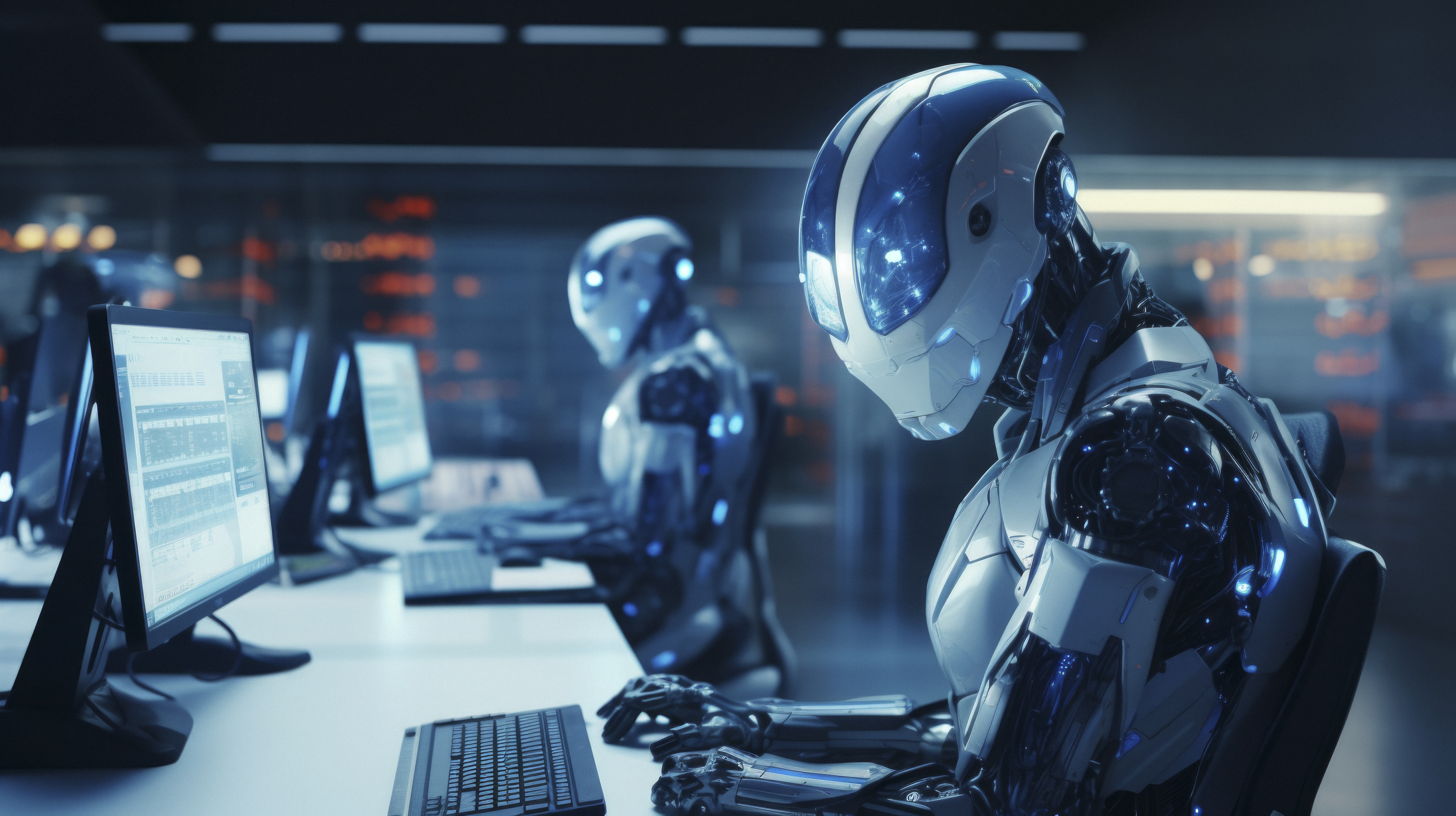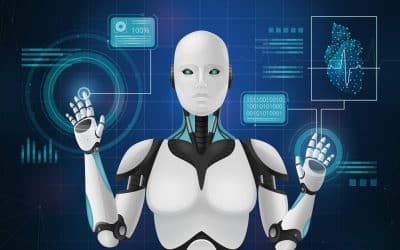Recently, many conversations have been held about the possible implementation of computer vision. Computer vision is a technology that duplicates the human eye and can better evaluate imagery. However, computer vision (CV) and machine learning (ML) are complex for many. This is mainly because each concept has some resemblances.
Machine learning within Computer Vision is a coupled technology that has long been of interest to startup founders, computer scientists, and engineers. The technology is aimed at different application domains and uses an algorithm derived from human natural vision to tackle real-world issues. Real-world issues remain in the background in the quest to offer solutions through computer vision. Computer vision, however, is a complicated field. In particular, the algorithm’s accuracy is a significant issue, as it makes the most suitable sources for computer vision.
We must first have an overview of computer vision to answer these questions and address these issues. Let’s learn about the connection between machine learning and computer vision.
What Is Computer Vision?
Computer vision is the method of comprehending digital images and videos using computers. It aims to make tasks easier for vision-based human beings to accomplish. This includes procedures for collecting information, processing digital images, understanding them, and extracting relevant details to produce data sets. There are sub-domains, like object recognition, video tracking, and motion estimation. It has applications in navigation, medicine, and object modeling.
In simple terms, computer vision operates with a computer’s camera to capture images or video to perform an analysis. Computer vision’s goal is to analyze the information of video and digital images. Additionally, it can extract something valuable and relevant from these photos and videos to resolve various challenges. Examples include methods that determine if there’s food in the fridge, assessing the health of ornamental plants, or complex operations like operations to retrieve debris.
Computer Vision Machine Learning has been booming recently due to high-performance computation, extensive data, and cloud-based systems. Moreover, there is a demand for devices capable of supporting visual data collection for machine learning programs. As with most machine learning techniques, computer vision also requires massive amounts of information to develop algorithms that understand the data.
Computer vision usually employs two technologies that are different:
Deep Learning
As previously mentioned, deep learning can be used for complicated problem-solving. Additionally, neural networks are essentially training machines’ “brains” to take in information from the visual world. Information about patterns, strategies, and modifications to environmental variables will be kept as time passes.
Convolutional Neural Networks
CNNs use visual data, such as pictures, and reduce it into pixels. They then use “convolutions” (a mathematical formula made by combining two different functions) to draw predictions from the data.
In essence, computer vision employs CNNs and deep learning to create high-speed, high-volume, and non-supervised learning using visual information for machines to process data like how a human functions.
What Exactly Is Machine Learning?
Machine learning involves using mathematical models and algorithms to complete tasks without introducing explicit directions. It is based on inference and pattern recognition using datasets. It needs minimal support from a programmer to make decisions. Machine learning can be performed using computers and requires no help from software programmers. It uses data to make choices and can be utilized in various interesting methods across various sectors. It could be classified as semi-supervised, supervised, or unsupervised learning.
In the context that is part of artificial intelligence, machine learning is generally a way to avoid some of the biggest or more philosophical AI issues by focusing on approaches to training and learning that can produce efficient machines to meet the needs of any particular setting. The field focuses on mathematical models, algorithms, and methods that shape machines for sectors as diverse as manufacturing distribution, retail, and logistics for supply chain manufacturing.
Various ML methods use training algorithms to identify patterns in data that can guide strategic decisions in similar settings. The methods include:
Supervised Learning
In supervised learning models, data scientists supply training data sets to ML systems and a list of inputs and desired outputs. This allows a machine learning system to discern the desired outcomes from a sequence of events and develop the most efficient strategies to achieve them.
Unsupervised Learning
According to the title, unsupervised learning techniques employ unstructured data with no optimal outputs. The machine learning system recognizes patterns within the data and formulates methods to improve the behavior.
Reinforcement Learning
The reinforcement learning process, commonly used for training machine agents within a particular system, employs models of cumulative reward to teach agents how to behave in different environments. The application of ML is utilized in many sectors. However, there are many studies in this field on multiplayer online games.
Deep Learning And Neural Networks
In the past, machine learning and AI systems employed linear or iterative methods for machine learning. In the 80s, researchers created “neural network” brains utilizing clusters of nodes and weighted decision-making methods. The result was that the machine learning system can reduce complex issues into smaller ones. Likewise, the resulting results from more straightforward issues could be incorporated into a comprehensive approach for bigger ones. Deep learning has taken this another step by developing layer-based neural networks, where layers of solutions-based networks can essentially create an innate problem-solving machine.
For example, a deep-learning brain might contain layers that simple pattern recognition methods could combine for complex tasks, such as facial recognition in photographs. All of these and other machine learning methods primarily focus on how to train machine learning systems. Create machine learning environments to train, and then use machine learning to develop comprehensive AI and autonomous systems.
The Difference Between Computer Vision & Machine Learning
Computer vision and machine learning are two aspects of AI that employ sophisticated algorithms to identify, study patterns, and interpret images quickly and precisely. The result is that the best method to distinguish these two techniques is through the way they are used because they have many similarities.
Here are a few of the main distinctions between machine learning and computer vision.
Technology
Computer Vision is an AI technology that helps computers learn to draw useful data from digital images. It assists systems in understanding and comprehending the world of visuals, just like human beings do. Machine learning, in contrast, is an analysis technique founded on the belief that computers can be taught from data, detect hidden patterns, and take the appropriate actions with no explicit programming.
Focus
Computer vision and machine learning rely on processing visual signals for tasks that require unmatched precision and speed that exceed the capabilities of humans. Computer vision attempts to emulate the capabilities of our vision system so that computers can learn to comprehend the world of visuals. However, machine learning focuses on enabling computers to understand and behave as humans. The goal is to create programs that automatically learn from user experiences without being specifically programmed.
Applications
Computer vision is now integral in various industries and for many purposes, such as image recognition, driverless vehicle testing, medical diagnostics, animal monitoring, motion analysis and the detection of masks, cell classification, and more. Machine learning is utilized in speech recognition, traffic forecasting and product suggestions, virtual assistants, self-driving vehicles, filtering emails, crucial financial information, and computer vision.
Focus Differences
For computer vision and machine learning, the goal is to help computer systems recognize and respond to information in a particular context. But, in contrast, computer vision is a lot more focused on visuals and imagery, while machine learning is focused on various kinds of data. It aims to solve image classification, detect objects and their segmentation, and track objects in video. The result is similar, but the nature of the input data will determine which method is most effective. What is essential is that a computer system must be able to learn from the previous information.
Relationship Between Machine Learning And Computer Vision
Technology is always quick to imitate the human brain, so AI has been a subject of curiosity for years. Let’s look at the relationship between AI, machine learning, and computer vision for a roadmap to these advancements. AI can be described as the umbrella term used to describe the three fields. Machine learning is one subset of AI, and computer vision is a machine-learning component. However, computer vision is an exact component of AI.
Computer vision and machine learning are two areas that have grown near each other. Machine learning has enhanced computer vision in terms of detection and tracking. It is a powerful method for acquiring image processing and focusing on objects that can be used to improve computer vision. The computer vision process has expanded the capabilities that machine learning can be applied to. It comprises a digital image or video, a sensor, an interpreter device, and an interpretation stage. Machine learning improves computer vision in both the interpreter and interpretation devices.
Machine learning is broad, and algorithmic techniques could be utilized in different fields. A good example is the study of a video recording using machine learning principles. Computer vision, in contrast, is primarily concerned with video and digital images. Additionally, it is involved in information engineering, physics, neuroscience, and signal processing.
The challenge for entrepreneurs and designers is the wide gap between the two fields of computer vision. The areas that are most closely connected to computer vision include image processing as well as image analysis. It is, however, a fascinating article to discuss the relationship between them and their differences. Additionally, the need for more understanding of machine learning’s primary objective in a specific project can cause massive issues among entrepreneurs.
What Is Computer Vision Under Machine Learning?
Machine Learning computer Vision Model provides a variety of solutions and advances in technology and are utilized by users every day. CV has developed efficient machine-learning techniques. The algorithms are highly efficient and produce the most impressive results. Computer vision comes from an aspect of machine learning. They collaborate in the majority of our day-to-day activities.
For example, suppose you’ve scannable QR codes on your laptop or any other device that indicates computer vision as part of machine learning. Therefore, every new technological gadget, such as mobile phones or PCs, utilizes CV as part of the umbrella of ML. The application you install in your gadget uses image sensors to process information at your pleasure.
Application Of Machine Learning In Computer Vision
Both ML and CV both have a variety of applications. A few of the most crucial applications for the ML component of CVs are:
AI Image Processing
AI imaging processing is a form of ML within the CV that has changed the technology landscape. Observing how even a tiny process like ML within a CV could have a considerable impact is awe-inspiring. AI Image Processing techniques can be executed using the overlapped skills of CV vs ML. Through the process, image information is altered or transformed to increase the quality of the picture or extract data about it.
Today, the crucial use of machine-learning models in CV can be found across all sectors worldwide, such as Agriculture 3D mapping, entertainment, business analytics, security, market research, etc. This demonstrates that the overlap between CV and machine learning is very significant.
Patterns Identification
AI uses machine learning computer vision to find and analyze objects of interest and patterns that are difficult to discern. Pattern recognition has brought about numerous breakthroughs in science and technology.
Creation Of Database
In the age of AI machine learning applications for computer vision, crucial data can be quickly saved into diverse databases from various companies worldwide.
Image Improvement and Rendering
Imagine a scenario where AI isn’t in existence due to the absence of CV or ML technology that would allow us to enjoy the current entertainment industry would never be possible.
Video Tracker
It’s the process that helps locate an object moving over time. The method of object recognition can help in video tracking, which is used to track athletes. The sport involves much movement, and these methods can be used to track athletes’ movements.
Essential Functions & Use Cases of Machine Vision
The combination of technologies has advantages and applications in high-quality assurance and efficient operations. Many companies are turning to machines that can help them achieve quality standards and improve customer satisfaction.
Firms often utilize machine vision systems in various capacities:
Machine Vision And The Automotive Industry
Machine vision determines and adequately applies a particular bead’s quality in the automobile industry. This ensures that the components will not leak or fail to seal correctly. It guarantees quality and reduces the need to rework, repair, or scrap. This is especially true because more and more pieces of manufacturing are now being held together using adhesives. Both 3D and 2D machine vision can tackle these problems. The more advanced configurations utilize specially designed machine vision equipment to deal with bead problems.
A further use for automobiles is inspection at the end of the line and barcode readout. Powertrain/propulsion process inspection ensures that engines/transmissions are assembled correctly, that no missing or extra “bonus” parts are present, and that clips are all secure. Engines/transmissions often feature numerous direct parts marked with data matrix codes, which must be read as part of track and trace procedures. This camera is capable of inspecting and code-reading procedures.
Machine Vision And The Food And Beverage Industry
In the beverage and food industry, machines can be utilized in the bottle cap and filling process. Machine vision systems will check whether the bottle is filled and the cap appropriately applied. This reduces waste and scrap and ensures the product is secure and filled.
Machine Vision And The Solar Industry
In the solar sector, machine vision systems can inspect the assembly of solar panels to verify whether they have been correctly constructed. This can be accomplished by looking for the presence or absence of components, locations, and measurements. It ensures that the panels being built can function when finished and will be maximally efficient.
Machine Vision And Durable Consumer Goods
In the case of durable consumer items (e.g., dishwashers, ovens, and microwaves), inspection of components can confirm that the components and machines can be constructed correctly. For that, it uses the presence/absence of measurement at a specific location and color recognition equipment.
Machine Vision And Fastener Manufacturing
When manufacturing fasteners, inspecting them to ensure they are formed correctly is possible. In most cases, the tops and threads on the fastener are examined. The inspection ensures that parts are correctly formed. This assists in determining the grade and also ensures that the parts are not defective and do not reach the final buyer.
Machine Vision And Plastic Injection Molding
When plastic is injected, machine vision allows you to check and ensure the mold pieces are correctly created. Deformed components may be due to quick shots. That means that enough material is introduced into the mold, causing the component to be distorted. This increases the quality of the part and decreases the amount of waste.
Summary
Computer Vision and Machine learning are crucial components of the landscape of artificial intelligence. Advancements in technology have greatly enhanced accuracy and efficiency across a range of tasks, including the classification of images, detection of objects, and segmentation. Furthermore, machine learning combined with Computer Vision Solutions provides expeditious development of technical strategies, software systems, or apps across major industries or business sectors.
The concept behind computer vision is to equip computers with the same human perception abilities to help them better comprehend and recognize the surroundings and make the right decisions. It lets computers extract useful information from images or videos just as humans perceive them. Computer vision is just one application of machine learning – an area of AI dedicated to developing machines capable of behaving and learning similarly to humans. However, unlike an AI system, which follows a predetermined set of guidelines, a machine-learning system can learn from previous experiences. It performs its actions without being controlled and without human involvement.











